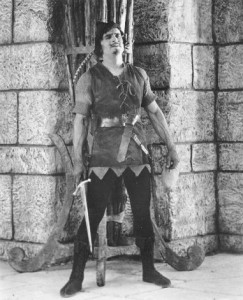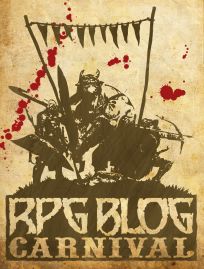RPG Scenario: Dead Ship
The following scenario came from a suggestion I made on Reddit a while ago. I decided to keep it and flesh it out a bit. This is meant to be for a Space based game, but could be modified for a Modern game.
Setup
The characters are crew members of the EDFR Rainier (Earth Defense Force, Reserve,) a Fast Combat Supply Ship. The FCSS is meant to accompany Naval Combat units and support all their supply needs. It provides fuel, ammunition, and all other supplies a ship in combat could need. In addition it has space to provide some man power transfers, mail deliveries, prisoner transport, and even other live cargo as needed.
The ship itself is heavily automated with redundant systems. In dock the ship is setup to automatically load and store supplies throughout it’s hull. A Fast Combat Supply Ship can also take supplies off of a variety of other transport ships as needed. This allows it to detach itself from the fleet, meet a supply convoy to load up, and then rejoin the fleet.
Supply transfer is partially done via automated lifters that can access any part of the ship as needed. For instance medical supplies will automatically be routed to the medical facilities storage, ammunition will be sent to weapons systems, fresh food will be sent to the galley.
The automated lifters are roughly man sized but can carry a ton each. They will gang up for heavier loads such as missiles and large equipment transfers if the direct connect automated systems are damaged. Anti-gravity propulsion systems allow them to work both in a gravity well and in the vacuum of space. The lifters are unarmed, but have enough armor to withstand minor damage.
The EDFR Rainier is designed to nestle directly against combat ships to minimize potential for enemy damage during combat. Armored cargo ports automatically connect each ship to allow the liters to travel between each. Fuel supply, and large ammunition transfer systems connect automatically through similar heavily armored and protected connections.
While the EDFR Rainier is armed, it’s weapons are purely defensive. These are antimissile, anti-air/fighter, and basic counter-measures. These systems automatically tie into those of whatever ship it is currently servicing to protect both ships while in combat and reloading. The crew of the ship being supplied has complete control of the EDFR Rainier during this time. They can designate priorities on supplies being transferred, initiate and stop transfers, and provide complete defensive needs in combat.
Crew members of the EDFR Rainier are mostly technicians. Their job is to get the Rainier to it’s destination and to service and repair the Rainier’s automated systems. They have basic weapons training, but much of it is out of practice. All crew members are well versed in Zero-G and EVA operations. In a pinch they can help load/unload.
Mission
The EDF Keiko Akane is a slightly out of date battleship. By modern standards she is only a destroyer. But sometime in her past she was heavily modified with faster engines and the latest in anti-detection systems. As such she still remains in service as a transport for Special Forces units being deployed directly to combat. The Rainier is sent to supply her while on mission.
As the Rainier approaches the rendezvous location they have to wait a couple of hours, deep in hostile space. Finally they get the automated message from the Keiko Akane, and both ships start the docking procedures. The Keiko Akane sends in it’s “order,” all routine for a ship that has been operating on it’s own for a while, and the Rainier obediently starts fulfilling the order as soon as the docking is done.
Everything is 100% as expected and routine. Until it comes time to undock. The EDF Keiko Akane never sends the final “go ahead and undock” order to the EDFR Rainier. Any automated or manual queries to the Keiko Akane about what the problem is go unanswered. Trying to manually undock is futile, the docking protocol is designed to work during ship to ship combat and is near impossible to break. Until the docking protocol is initiated, both ships will act and perform as one.
After 4.6 hours, the EDF Keiko Akane puts both ships on high alert and in defense mode. After 27 minutes both ships start accelerating quickly and firing weapons. This lasts for 18 minutes and then ceases. 85 minutes later the EDF Keiko Akane puts in another request for ammunition and fuel which the Rainier dutifully carries out. This pattern repeats every 4.6 hours down to the millisecond.
Characters should note that during combat, Fast Combat Transports are programmed to send over their own fuel reserves if necessary.
That will be necessary after this happens 7 more times.
EDF Keiko Akane
Characters can gain access to the Keiko Akane several ways. They can use the cargo ports at the same time as the automated lifters. They can spacewalk over to the ship and break in through personnel ports. Or they can take the Rainier’s Collier over. If either of the last two happen, they will have a chance to notice the damage to the Keiko Akane.
The port side of the Keiko Akane looks untouched. This is the side the Rainier approached from and docked with per the Keiko Akane’s orders during the docking protocol. The starboard side of the ship has been heavily damaged. At least three quarters of it’s weapons systems are destroyed. A large section of the hull looks like it’s been carved away leaving half the ship’s decks open to space. At least one of the ship’s reactors was jettisoned into space after it went critical.
If they board the ship they will find signs of battle. The red alert signal comes up at the 4.6 hour mark and continues until the acceleration and firing cycle quits. Ship readouts show that most systems are functioning somewhat but she has been so heavily damaged that it’ll be cheaper to build a new ship. Every fire door has been closed. Many compartments are full of radiation or worse. The forward computer room is completely gone as is a major portion of crew quarters, the galley, the forward missile bays, and half the ships sensors.
The computer is still somewhat operational. It does suffer from a multitude of glitches and reports that the galley is ready to serve food anytime they wish. It shows both that the life boats were launched and that they are still onboard. It is as helpful as it can be, but that is not much. It continually warns them away from the Secondary Computer room to the aft of the ship due to immense radiation.
The compartment has been sealed due to a massive radiation link from the jettisoned engine from the nearby compartment. In addition to the automatic seals, the former crew attempted to erect additional protective barriers. The radiation levels are so high even someone in a protective suit will become so radiated that they’ll be dead within a week. Scans of nearby corridors back this up by showing they too have lethal levels of radiation.
No remains are left on the ship, but signs of personnel abound. Pools of blood from wounded and killed have been hastily wiped up. The surgery shows sign of heavy use. Consoles and chairs are smashed from where bodies hit them. Equipment is strewn about after use or ripped from it’s storage by impact. Any weapons found are fully loaded and functional.
Eventually the characters will figure out how to get to the secondary computer room as it’s obvious that a glitch is causing the problems. When they do get there, they’ll find that it’s been gutted by the same thing the caused the engine to go critical.
At this point, the computer goes silent. All the while, the countdown towards the next rearming cycle continues.
Possible Scenariors
The “computer” is actually a sentient being that accidentally ran into the ship, causing the massive damage. It’s mental capacity is pretty low, but it somehow managed to merge with the ship’s A.I. systems.
There is actually a third computer system on the ship. It’s much smaller, and was meant to only control the engine systems. The crew desperately pressed it into service to replace the two main systems. But it’s hopelessly underpowered and is suffering a number of minor glitches.
The EDF Keiko Akane’s mission failed. To make matters worse, it’s victorious opponent just showed up to take possession of the remains of the ship.

